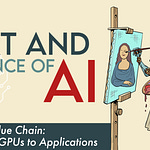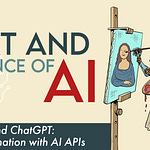In this episode we go beyond classical machine learning into the fascinating world of neural networks. We discuss how neural networks, inspired by the human brain, revolutionize our ability to process unstructured data like images and text. Using a detailed example of handwriting digit recognition, we break down how neural networks learn patterns, make predictions, and transform raw data into valuable insights. Tune in to explore the magic of hidden layers, the significance of activation functions, and the trade-offs between model power and interpretability in modern AI systems.
🎧 Listen to the episode
Watch or listen to the episode on YouTube, Spotify, Apple Podcasts, Substack (right on top of this page), or copy the RSS link into your favorite podcast player!
⏰ Chapters
00:00: Preview and intro
01:02: Intro to Neural Networks
05:12: Neural networks deep dive with computer vision
17:16: Neural networks vs. classical ML
22:18: Importance of GPUs for neural networks
🧠 Key concepts
Neural Networks are inspired by the human brain
Neural Networks excel at processing unstructured data, where classical ML struggles
Images are encoded as pixels into Neural Networks
Neural networks are trained via backpropagation and gradient descent
GPUs are extremely efficient at training neural networks
🔗 References
Nikhil Maddirala: https://www.linkedin.com/in/nikhilmaddirala/
Piyush Agarwal: https://www.linkedin.com/in/piyush5/
📓 Detailed notes
Neural Network Basics: Neural networks are inspired by the human brain, consisting of interconnected neurons that activate in response to inputs, enabling complex pattern recognition and decision-making.
Structured vs. unstructured data: Classical ML struggles with unstructured data like images and text, while neural networks excel by processing raw inputs without requiring predefined features.
Handwriting Recognition Example: The MNIST dataset, used for training models to recognize handwritten digits, demonstrates how neural networks convert pixel data into accurate predictions.
Model Architecture and Training: Neural networks consist of input, hidden, and output layers. Training involves optimizing thousands of parameters through techniques like backpropagation and gradient descent.
Interpretability and Trade-offs: While neural networks offer powerful predictive capabilities, they often function as black boxes, making it difficult to understand and explain their decision-making processes.
💬 Keywords
#ai #artificialintelligence #machinelearning #neuralnetwork #gpu #nvidia #tech #podcast











